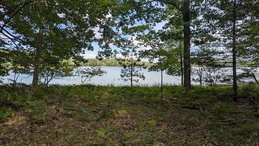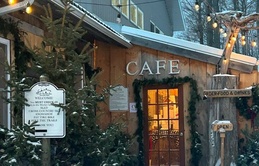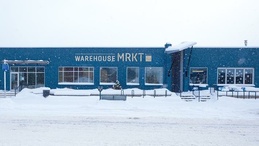Gaylord’s Alpine Building Motif
July 8, 2016
 STILL GOING STRONG
STILL GOING STRONGWhat do you do to draw tourists if your town is in danger of dying? If you’re the people of Gaylord some 50 years ago, you transform it to look like somewhere else entirely — in this case, a quaint Alpine village in Switzerland.
“It got started with some of the business community in the early ’60s,” said Gaylord City Manager Joe Duff. Thanks to the opening of I-75, which bypassed Gaylord rather than ran right through it, as old US-27 had, travelers were driving right past the town, and business was suffering, he said.
“The town leaders worried about the death of downtown,” said Paul Beachnau, executive director of the Gaylord Chamber of Commerce. “They needed to do something unique.”
Cue the alpine theme. The nearby Otsego Club had opened in 1939. Original owner Don McLouth had favored Swiss chalet styling for his buildings, and visitors had loved it. “The city leaders said, ‘Why don’t we do this?’ It made the town look different,” said Beachnau.

“Gordon Everett, a printer and publisher, decided to encourage the downtown to take on the look. Banks said they would provide low-interest loans,” said Duff.
Gaylord citizens embraced the concept, and the style caught on throughout the central business district.
While Gaylord is more than 4,000 miles from the Swiss Alps, the style fit well with the copious amounts of snow the area was blessed with each winter. Since converting, the city council of Pontresina, Switzerland has recognized the northern Michigan hamlet as “family,” having named it a sister city.
Today as Gaylord continues to grow, it leverages its four-season recreational opportunities more than its Alpine style to draw tourists — the city sits smack dab in the center of the region’s golf mecca and its snowbelt — but its motif is still an essential part of its success, says Beachnau. “Our message is ‘All outdoors.’ We’ve got the Pigeon River State Forest, downhill and cross-country skiing, snowmobiling, hiking,” said Beachnau. “On top of it, we’ve got this cute thematic area.”
Despite the fact there are no hard and fast rules regarding use of the Alpine theme, Duff said the facades of buildings old and new reinforce it. “We’ve always encouraged it, but there are no design standards. We’ve seen pretty good success,” he said, pointing to a recent facelift of the Alpine Tavern and the Alpine Executive Center, a multi-suite retail and office space in the heart of downtown.
The city’s growth to the west has seen fewer businesses invest in the Alpine heritage. Duff said larger corporations, such as the relatively new Meijer on the west side, are less inclined to do so. But even some of those, including Arby’s, McDonald’s, Advanced Auto, Speedway, and Burger King, have incorporated the theme to some extent. The heart of the downtown is where the Alpine heritage is most evident. Visitors walking on Main Street can’t escape it, as numerous businesses sport the gabled roofs with wide eaves, exposed beams and brackets, window boxes and other hallmarks of the style. Those traditions come to the forefront during Alpenfest, the city’s annual summer cel ebration.
Beachnau said the festival is tremendously important to the city. Main Street is closed to traffic and becomes a walking version of the German Alpenstrasse, where artists and craftsmen from around the country gather to display and sell their wares.
Alpenfest’s Saturday parade features folks in lederhosen and burgermeisters, aka “master of the citizens,” in their black jackets. The festival even includes a blowing of the alphorn, the long wooden natural trumpet used by villages in the Alps to communicate with one another in those long-ago pre-telephone and pre-internet days. Beachnau said a local woman has been playing it at the Alpenfest for over 30 years and has passed the tradition to her granddaughter. All this because some forward-thinking town fathers pressed for a unique look to revitalize and rebrand their city a half-century ago. “We can’t prevent [Gaylord businesses] from doing something else, but we ask them to take a look at it,” said Duff. “It’s worked out fairly well.”
Trending

Welcoming the Winter Solstice: Rituals & Events for the Shortest Day of the Year
With the winter solstice quickly approaching, it’s hard not to notice how dark each day feels. Astronomically, this is… Read More >>
Camp Greilick Now Open!
It’s been a long road for the century-old Camp Greilick, which, after several dormant years, was acquired by Grand Tra… Read More >>
Men and Ugly Sweaters
Those two things don’t always go together, but on Dec. 19, you’ll see both out and about in Petoskey and Harbor … Read More >>


